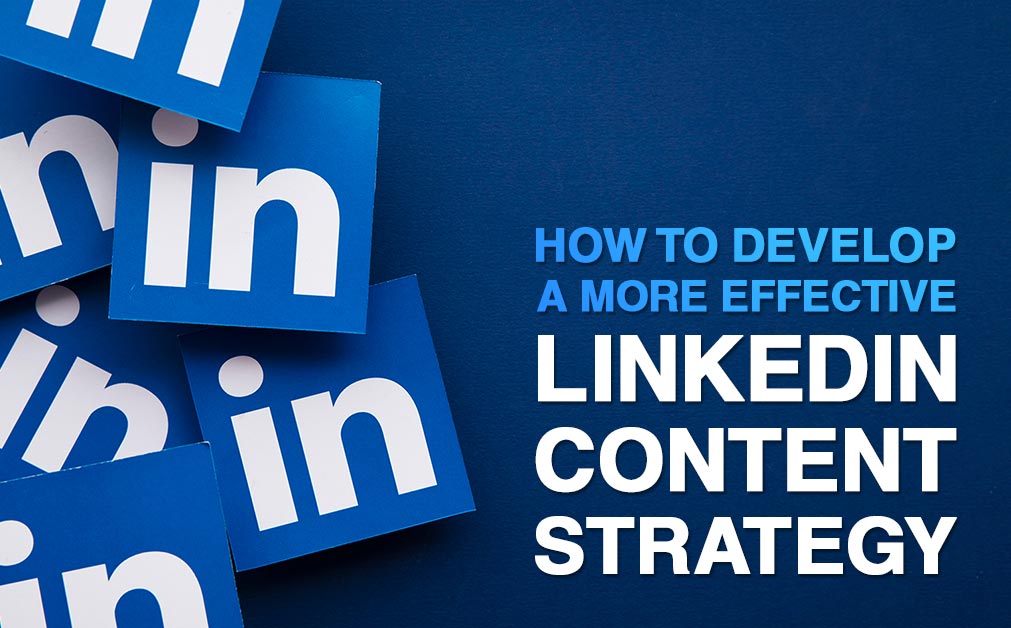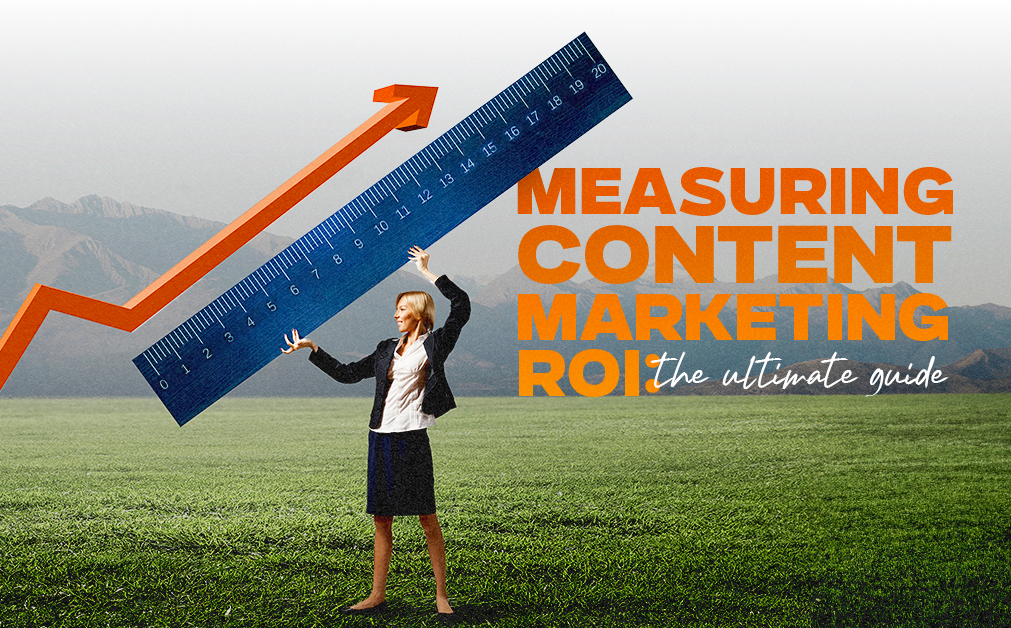You’ve been burning the midnight oil, creating great content that connects and educates your customers and prospects. But when it’s all said and done, you have to make sure your content is making waves. That’s why keeping tabs on your content marketing ROI is so important.
Understanding how your content is performing can be like navigating a maze blindfolded.
But guess what? I’ve got the map, and I’m here to guide you every step of the way. We’ll transform you into a content tracking expert in no time.
Ready to uncover the hidden gems in your content’s performance?
Let’s embark on this journey together and make some exciting discoveries!
Get your FREE Marketing Check Up now!
Table of Contents:
- The Challenge of Measuring Content Marketing ROI
- Identifying the Right Metrics
- The Impact of Content Marketing on Lead Generation and Costs
- Tracking ROI to Secure Higher Marketing Budgets
- The Role of Website Traffic in Content Marketing Success
- Essential Metrics for Measuring Content Marketing ROI
- Enhancing Your Content Marketing Strategy for Better ROI
- Leveraging Social Media for Wider Reach
- Email Marketing Integration
- The Comprehensive Guide to Calculating Content Marketing ROI
- Understanding Investment Costs
- Assessing Content Performance through Analytics
- Setting Realistic Goals for Your Content Marketing Efforts
- Focusing on SEO Improvement
- Prioritising Customer Education and Retention
- Exploring Different Content Distribution Channels
- Sales Enablement Through Strategic Content Creation
- Case Studies on Successful Content Marketing Campaigns
- Future Trends in Content Marketing and Predicted ROI Impacts
- FAQs in Relation to Measuring Content Marketing Roi
- How do you measure marketing ROI effectiveness?
- How to measure ROI in digital marketing?
- How do you measure content marketing?
- Is marketing ROI a KPI?
- FAQs in Relation to Measuring Content Marketing ROI
The Challenge of Measuring Content Marketing ROI
Measuring the ROI of your content marketing efforts is one of the biggest challenges marketers face today. In fact, according to a study by Content Marketing Institute, 61% of marketers consider measuring content marketing ROI as their top challenge.
But why is it so difficult to measure the ROI of your content marketing campaigns? What is the roi formula? And more importantly, why is it important to overcome this challenge?
Identifying the Right Metrics
One of the main reasons measuring content marketing ROI is so challenging is because many marketers struggle to identify the right metrics to track to calculate content marketing ROI.
With so many different KPIs and data points available, it can be overwhelming to determine which ones are most important for evaluating the success of your content marketing strategy against your content marketing goals.
Is your content working hard for you? Key performance indicators like website traffic, engagement rates, lead generation, and conversion rates hold the answer.
By keeping a close eye on these metrics, you’ll gain valuable insights into how your content is resonating with your audience and whether it’s delivering the results you need to grow your business.

The Impact of Content Marketing on Lead Generation and Costs
While measuring content marketing ROI can be challenging, the impact it can have on your lead generation and overall marketing costs is undeniable.
In fact, research by Demand Metric reveals that content marketing generates three times as many leads as traditional outbound marketing, but costs 62% less.
By creating valuable, informative content that resonates with your target audience, you can attract more qualified leads to your business without breaking the bank. This is because content marketing allows you to build trust and credibility with your audience over time, making them more likely to convert into paying customers down the line.
Tracking ROI to Secure Higher Marketing Budgets
Another important reason to prioritise measuring content marketing ROI is that it can help you secure higher marketing budgets in the future.
A survey conducted by HubSpot found that companies that track ROI are 1.6 times more likely to achieve higher marketing budgets.
Showcasing the measurable outcomes and return on investment from your content marketing efforts makes a compelling case for allocating additional resources to your campaigns. Doing so empowers you to amplify your marketing content and attain greater triumphs in the future.
The Role of Website Traffic in Content Marketing Success
One of the most direct indicators of successful content marketing is an increase in website traffic. By creating high-quality, SEO-optimised content that ranks well in search engines, you can drive more organic traffic to your site over time.
Want to boost your website traffic?
Aberdeen Group found that companies with well-crafted content marketing strategies enjoy a remarkable 27.1% year-over-year growth in unique visitors.
The key is to use Google Analytics to monitor your site’s traffic and pinpoint the content that’s drawing the most attention. Then, you can tweak your strategy for maximum impact.

Essential Metrics for Measuring Content Marketing ROI
So what are the most essential metrics for accurately measuring the ROI of your content marketing investments?
According to Semrush, some of the key metrics to focus on include:
- Website traffic
- Engagement rates (e.g. likes, shares, comments)
- Lead generation
- Conversion rates
- Customer acquisition costs
Picture this: you’re tracking these key metrics, and you’re using an attribution model to uncover the secret sauce behind your top-performing content. Suddenly, your content marketing ROI becomes crystal clear, and you’re making data-driven decisions left and right to optimise your strategy and crush your goals.
Enhancing Your Content Marketing Strategy for Better ROI
Tracking your content marketing ROI is just the beginning. To really boost your returns, you’ve got to keep refining and optimising how you create and share your content.
Leveraging Social Media for Wider Reach
One effective way to do this is by leveraging social media to amplify the reach of your content.
By sharing your blog posts, videos, and other content pieces on platforms like Facebook, Twitter, and LinkedIn, you can tap into a wider audience and drive more traffic back to your site and increase your brand awareness.

Email Marketing Integration
Another strategy is to integrate your content marketing efforts with your email marketing campaigns.
By creating targeted email newsletters that feature your latest content pieces and encourage subscribers to engage with your brand, you can nurture leads more effectively and drive more conversions over time.
The Comprehensive Guide to Calculating Content Marketing ROI
If you’re still feeling overwhelmed by the prospect of calculating your content marketing ROI, don’t worry – we’ve got you covered.
Here’s a step-by-step guide to help you get started:
Understanding Investment Costs
The first step is to understand all the potential costs involved in creating and distributing your content. This includes things like:
- Content creation costs (e.g. writer fees, designer fees, your time)
- Content promotion costs (e.g. social media advertising, paid search)
- Technology and tool costs (e.g. marketing automation software, SEO tools)
Assessing Content Performance through Analytics
You’ve nailed down your investment costs; now it’s time to measure content performance using the marketing roi formula.
Google Analytics is your best friend here – it’ll help you track key metrics like website traffic, engagement rates, and conversion rates.
These numbers will give you a solid idea of which content pieces are resonating with your audience and driving the most ROI. Don’t be afraid to get granular and really analyse what’s working and what’s not.
To calculate your content marketing ROI, use this simple content marketing ROI formula:
Wondering how to figure out your ROI? Just subtract your initial investment from your total return, and then divide the result by what you originally invested.
For example, if you spent $1,000 on creating and promoting a piece of content that generated $5,000 in sales, your ROI would be:
Imagine having $5,000, and then you choose to spend $1,000 of it. If you divide the remaining amount by the $1,000 you spent, you’ll find that you now have 4 times the amount you originally spent.
In other words, for every dollar you invested in that piece of content, you generated $4 in return.
Setting Realistic Goals for Your Content Marketing Efforts
To get the most bang for your buck with content marketing and content assets, it’s essential to set achievable targets based on real-world data.
Take a look at what others in your industry are accomplishing and review your own track record to come up with a game plan that’s both ambitious and attainable.
Focusing on SEO Improvement
One sure fire way to get more eyes on your website is by improving your search engine rankings.
How? Through the power of SEO.
Optimise your content for the keywords your target audience is searching for, and build a strong backlink profile with links from authoritative sites in your niche. Higher rankings mean more organic traffic coming your way.
Prioritising Customer Education and Retention
Another key goal to consider is educating and retaining your existing customers.
By creating valuable, informative content that helps your customers get the most out of your products or services, you can improve customer satisfaction and loyalty over time.
This can lead to higher retention rates, more repeat business, and ultimately, a better ROI for your content marketing efforts.
Exploring Different Content Distribution Channels
Here’s a pro tip for boosting your content marketing ROI: diversify your distribution strategy. Cast a wide net by leveraging multiple channels, and then double down on the ones that deliver the most impressive results.
- Organic social media
- Paid social media advertising
- Email marketing
- Guest blogging
- Influencer partnerships
- Content syndication
By experimenting with different channels and measuring the results, you can identify the most effective ways to reach your target audience and drive more ROI for your content marketing campaigns.
Sales Enablement Through Strategic Content Creation
Another way to boost your content marketing ROI is by creating content that directly supports your sales team and helps them close more deals. This may include things like:
- Case studies showcasing customer success stories
- Product demos and tutorials
- Sales scripts and email templates
- Competitive analysis and comparison
When your content creation team and sales department work together, magic happens. You’ll build a sales funnel and sales process that flows smoothly, guiding potential customers from initial interest to the final purchase – and boosting your bottom line in the process.
Case Studies on Successful Content Marketing Campaigns
One of the best ways to learn how to optimise your own content marketing ROI is by studying successful campaigns from other businesses.
Here are a few notable examples:
- HubSpot’s Inbound Marketing Blog – By creating a wealth of informative, actionable content on all things inbound marketing, HubSpot has established itself as a go-to resource and thought leader in the industry. This has helped them attract a massive audience and generate significant ROI from their content efforts.
- Marriott’s Travel Magazine – By launching a digital travel magazine featuring destination guides, travel tips, and stunning photography, Marriott was able to reach a wider audience of travel enthusiasts and drive more bookings for their hotels.
Zendesk’s Customer Service Blog – By creating helpful, informative content on customer service best practices and trends, Zendesk has positioned itself as a valuable resource for businesses looking to improve their customer experience. This has helped them generate more leads and close more deals over time.
Future Trends in Content Marketing and Predicted ROI Impacts
Content marketing is always changing – blink and you might miss the latest trend that could make or break your ROI. To stay in the know, keep your eyes peeled for emerging trends and think about how they could impact your bottom line.
- The rise of video content – With video expected to account for 82% of all internet traffic by 2022, businesses that invest in high-quality video content may see significant ROI in the coming years.
- The growing importance of voice search – As more consumers use voice assistants like Siri and Alexa to search for information online, businesses will need to optimise their content for voice search to stay competitive.
- The emergence of AI-powered content creation – While still in its early stages, AI-powered generative tools like Chat GPT have the potential to revolutionise content creation and make it faster and more efficient than ever before.
- The emergence of visual search in marketing – Visual search transforms window browning into instant buying decisions, and yes, it’s happening right now!
To prime your business for success down the road, keep an eye on these evolving trends. Regularly measuring and optimising your content marketing ROI is equally important.
Key Takeaway:
Measuring content marketing ROI is tough but crucial for nailing your strategy. Key metrics like website traffic, engagement, leads, and conversions are gold. Remember, good content can massively boost leads while slicing costs.
Leverage social media and email to spread your message further. Use analytics to track what works and refine as you go for even better results.
Conclusion
Measuring content marketing ROI isn’t always a walk in the path, but it’s so worth it. Setting clear goals is just the beginning. Pair them with the perfect tools and keep a close eye on your data – that’s how you’ll make smart moves and get your content working its hardest for you.
So go forth and conquer! Keep creating amazing content and proving its value!
Need help? Check out our full range of services.
Connect with me on LinkedIn
FAQs in Relation to Measuring Content Marketing ROI
How do you measure marketing ROI effectiveness?
To gauge marketing ROI, subtract the marketing campaign’s cost from its generated revenue. Then divide that by the campaign’s cost again. This formula lets you see how much bang you’re getting for your buck.
How to measure ROI in digital marketing?
In digital realms, measuring ROI involves tracking key performance indicators (KPIs) like conversion rates and website traffic through tools such as Google Analytics. You’ll need to align these metrics with specific goals of your content or social media strategies.
How do you measure content marketing?
You size up content marketing by looking at engagement rates, lead generation numbers, and sales enablement success. Tools that track website traffic and social shares can help paint a clear picture of how well your content is performing.
Is marketing ROI a KPI?
Absolutely. Marketing Return on Investment (ROI) is indeed a crucial Key Performance Indicator (KPI). It helps businesses understand the efficiency of their investment in their various campaigns—be it email blasts or blog posts—by showing profit compared to costs involved.
